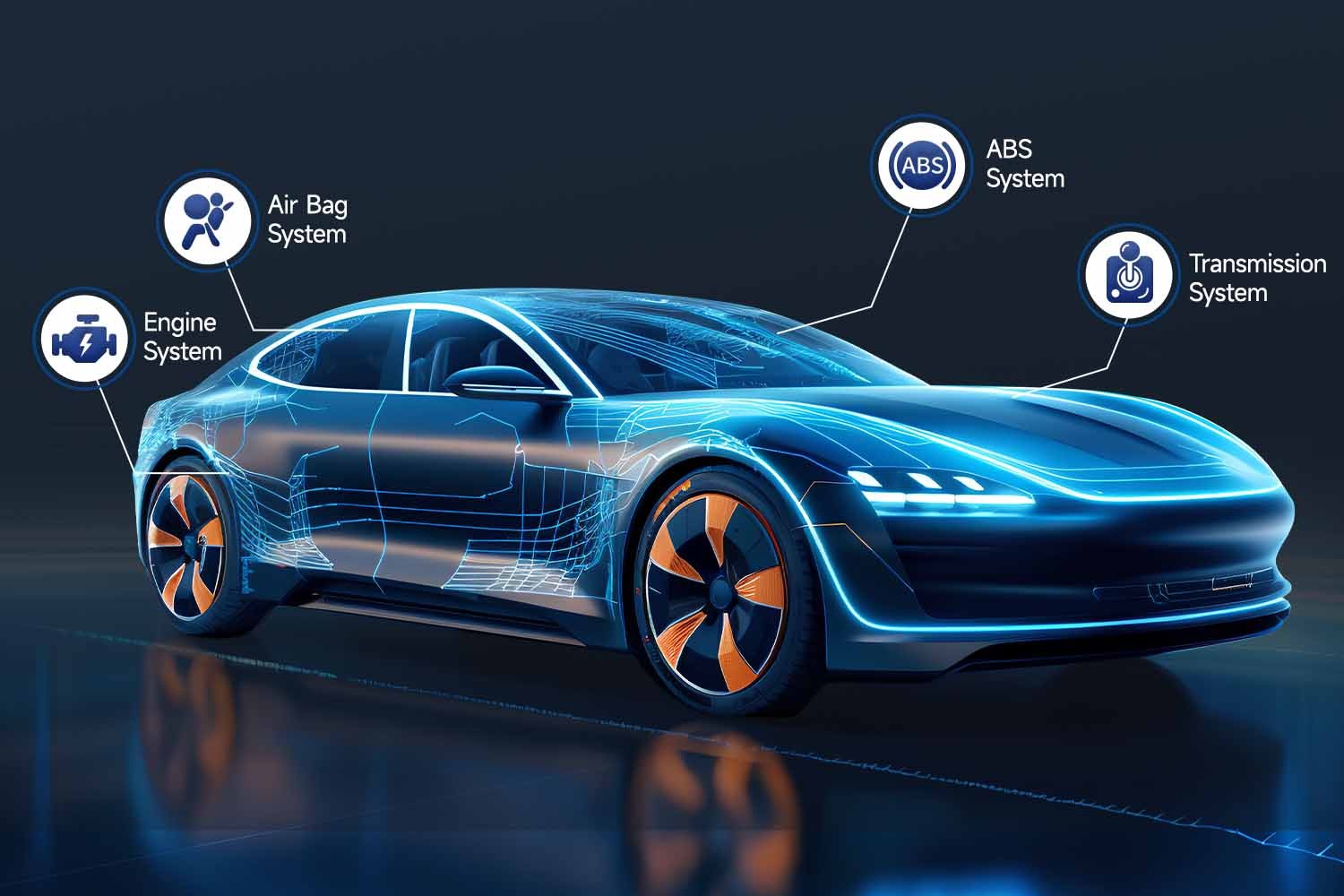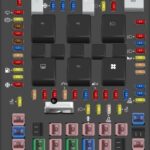Resetting your vehicle’s Engine Control Unit (ECU) can seem like a daunting task, often considered when troubleshooting persistent engine lights, addressing performance hiccups, or after making modifications to your car. A common question for car owners is: Can You Reset Ecu With Obd2 scanners?
This article dives deep into whether you can indeed reset your ECU using an OBD2 scanner. We will explore the types of OBD2 scanners capable of ECU resets, guide you through the process, discuss potential risks, and present safer alternatives if you’re hesitant to handle it yourself.
By the end of this guide, you’ll be well-informed to decide if resetting your ECU with an OBD2 scanner is a task you can confidently undertake, or if it’s best entrusted to professionals.
Understanding ECU Reset and OBD2 Scanners
Before we delve into the “how,” let’s clarify the “what.” Your car’s ECU is essentially its brain, a sophisticated computer that manages various engine and vehicle functions, from fuel injection to emissions control. It learns and adapts over time based on driving conditions and sensor inputs.
An OBD2 (On-Board Diagnostics II) scanner is a tool that plugs into your car’s diagnostic port, allowing you to communicate with the vehicle’s computer system. These scanners are invaluable for reading diagnostic trouble codes (DTCs) when your check engine light illuminates, providing insights into potential problems.
The Right OBD2 Scanner for ECU Reset
The short answer to “can you reset ECU with OBD2?” is yes, but not with every OBD2 scanner. Basic, entry-level OBD2 scanners typically only read and clear diagnostic trouble codes. While clearing codes might temporarily turn off a check engine light, it doesn’t perform a full ECU reset.
To truly reset your ECU, you need an advanced OBD2 scanner equipped with specific functionalities. Here’s what to look for:
Key Features to Look For
- Advanced Diagnostic Capabilities: The scanner should go beyond basic code reading and access various vehicle systems, including engine, transmission, ABS, and more. This broad access is crucial for interacting with the ECU effectively.
- Bi-Directional Control (Active Test): This feature allows the scanner to send commands to the vehicle, not just receive data. Bi-directional control is essential to initiate an ECU reset command. Without it, the scanner can’t instruct the ECU to reset.
- Wide Vehicle Compatibility: ECU communication protocols differ across manufacturers. Ensure the scanner supports a wide range of makes and models, and importantly, is compatible with your specific vehicle’s year, make, and model.
- User-Friendly Interface: A clear, intuitive interface is vital, especially for non-professional users. Ease of navigation minimizes errors during the reset process. Touchscreen interfaces and well-organized menus are beneficial.
- Updatable Software: Vehicle technology evolves constantly. A scanner with updateable software ensures it remains compatible with newer vehicles and can handle ECU resets on the latest systems. Regular updates keep the tool relevant and effective.
Tools like the Foxwell NT909, Autel MaxiCOM series, and Launch X431 series are examples of OBD2 scanners that generally offer the necessary features for ECU resets, alongside many other advanced diagnostic and service functions.
Step-by-Step Guide: Resetting Your ECU with an OBD2 Scanner
While the exact steps may vary slightly depending on your specific OBD2 scanner, the general process for resetting your ECU is similar. Let’s outline the steps, using the Foxwell NT909 as a practical example of a user-friendly tool that simplifies this process.
Using the Foxwell NT909: A Practical Example
The Foxwell NT909 is known for its ease of use and comprehensive capabilities, making ECU resets straightforward.
Step 1: Plug in the Scanner
Locate your vehicle’s OBD2 diagnostic port. It’s usually found under the dashboard on the driver’s side. Plug the Foxwell NT909 securely into this port. The NT909’s cable is designed for easy handling, ensuring a hassle-free connection.
Step 2: Turn on Ignition
Turn your car’s ignition to the “ON” position. Do not start the engine. The Foxwell NT909 will automatically power on once connected to the OBD2 port, drawing power directly from the vehicle.
Step 3: Navigate to Reset Function
Using the Foxwell NT909’s touchscreen, navigate the main menu. Look for options like “ECU Reset,” “Service Reset,” “Adaptation Reset,” or similar terms. The NT909’s interface is designed to be intuitive, minimizing confusion and making function location easy.
Step 4: Follow Prompts
Select the ECU reset function. The NT909 will display on-screen prompts guiding you through the process. This typically involves confirming that you want to proceed with the ECU reset. The NT909’s fast processor ensures minimal waiting time during these steps.
Step 5: Wait for Completion
Once initiated, the Foxwell NT909 will communicate with your vehicle’s ECU to perform the reset. This process usually takes only a few minutes. The scanner will display a notification upon completion, indicating that the ECU has been successfully reset to its factory settings.
The Foxwell NT909, beyond ECU resets, offers a wide array of diagnostic and service functions. It provides real-time data, advanced system diagnostics, and bi-directional control, empowering you to manage various aspects of your vehicle’s health. It’s akin to having professional-grade diagnostic tools readily accessible in a user-friendly device.
Potential Risks of ECU Reset
While resetting your ECU can be beneficial, it’s crucial to be aware of potential risks:
What Could Go Wrong?
- Loss of Adaptive Learning Data: ECUs learn and adapt to your driving style, optimizing fuel efficiency, idle control, and other parameters over time. Resetting the ECU erases this learned data. Your vehicle might not perform optimally immediately after a reset until the ECU relearns these settings, which can take some driving time.
- Masking Underlying Issues: If underlying mechanical or sensor problems are triggering fault codes, an ECU reset might temporarily clear the codes and the check engine light without resolving the root cause. The problem will likely reappear, and delaying proper diagnosis could lead to more significant issues.
- Data Corruption or Communication Errors: Although rare with quality scanners, interruptions during the reset process (e.g., scanner losing power or connection) could lead to incomplete resets or data corruption within the ECU. This can potentially cause more severe problems requiring professional intervention.
Safer Alternatives to DIY ECU Reset
If the risks of DIY ECU reset with an OBD2 scanner seem concerning, or if you’re uncomfortable with the process, consider these safer alternatives:
When to Seek Professional Help
- Visit a Professional Mechanic: A qualified mechanic has professional-grade diagnostic tools specifically designed for your vehicle’s make and model. They can perform ECU resets safely and accurately, and they can properly diagnose and address any underlying issues that may be prompting the need for a reset.
- Use a Dealer-Level Diagnostic Tool: Dealerships utilize advanced diagnostic tools that offer comprehensive access to your vehicle’s systems. These tools provide a very safe and precise method for ECU resets and other complex procedures. While typically more expensive, they offer greater assurance of a correct and safe process.
- Battery Disconnection Method (Use with Caution): Disconnecting your car battery (typically the negative terminal) for 15-30 minutes can sometimes reset the ECU by cutting off its power supply. This forces the ECU to reboot. However, this method is less precise than using a scanner and might not address specific issues. It can also erase other volatile memory settings in your car. Consult your vehicle’s manual before attempting battery disconnection, as it might not be recommended for all vehicles and can have unintended consequences.
- ECU Reflashing by a Specialist: For persistent issues or performance optimization, ECU reflashing (updating or reprogramming the ECU software) by a qualified specialist might be a better option. This is a more complex procedure but can address software-level problems or enhance vehicle performance.
Conclusion
Yes, you can reset ECU with OBD2 scanners, provided you use a scanner with advanced capabilities like bi-directional control and broad system access. Using the right tool and following the correct procedure can make it a manageable task for informed car owners.
However, it’s essential to weigh the potential risks and consider your comfort level. If you are uncertain or concerned, seeking professional assistance from a mechanic or utilizing dealer-level tools is a prudent approach.
Whether you choose to reset your ECU yourself or opt for professional help, understanding the process and available tools empowers you to make the best decision for your vehicle’s maintenance and performance.
FAQs
Can you program ECU with OBD2?
Yes, but ECU programming requires specialized and advanced OBD2 scanners with ECU programming capabilities. Basic OBD2 scanners cannot perform ECU programming.
Can I program my ECU myself?
Yes, you can program your ECU yourself if you possess the necessary tools, software, and in-depth knowledge of your vehicle’s ECU system. However, ECU programming is complex and carries significant risks if not done correctly. It is generally recommended for experienced professionals or individuals with substantial technical expertise. Incorrect programming can lead to serious vehicle malfunctions.
Can a cheap OBD2 scanner damage an ECU?
While direct damage to the ECU from a cheap OBD2 scanner is relatively rare, poorly designed or malfunctioning scanners can potentially cause communication errors or send incorrect signals that could disrupt ECU operation or lead to minor electronic issues. It’s always advisable to use reputable, well-reviewed OBD2 scanners from established brands to minimize any risks.

